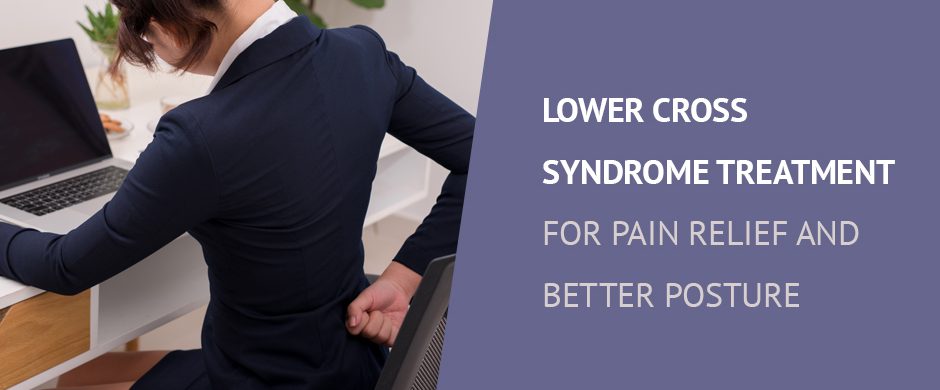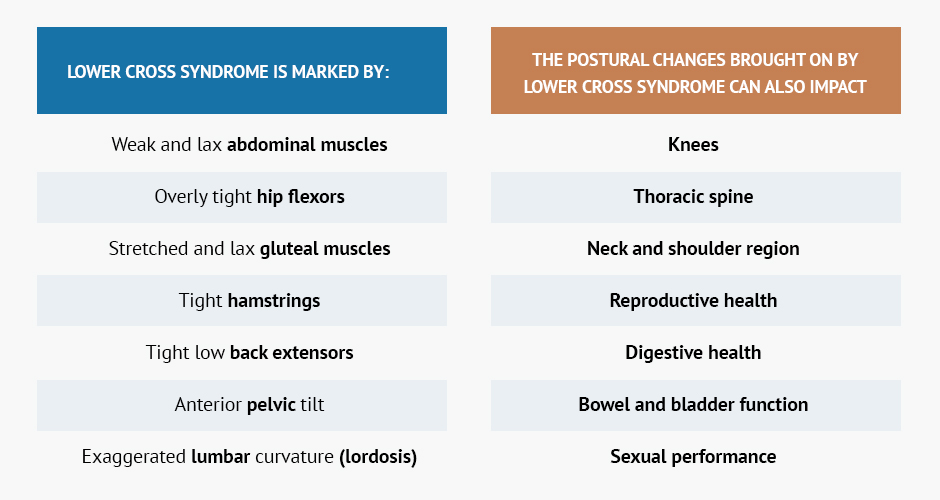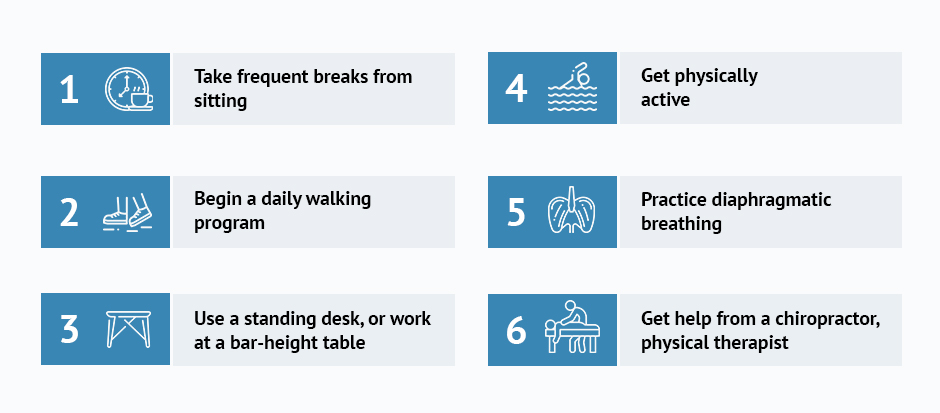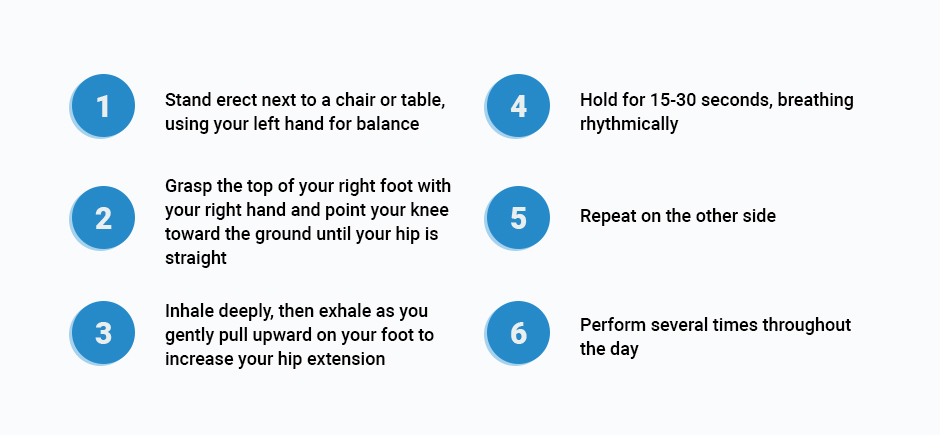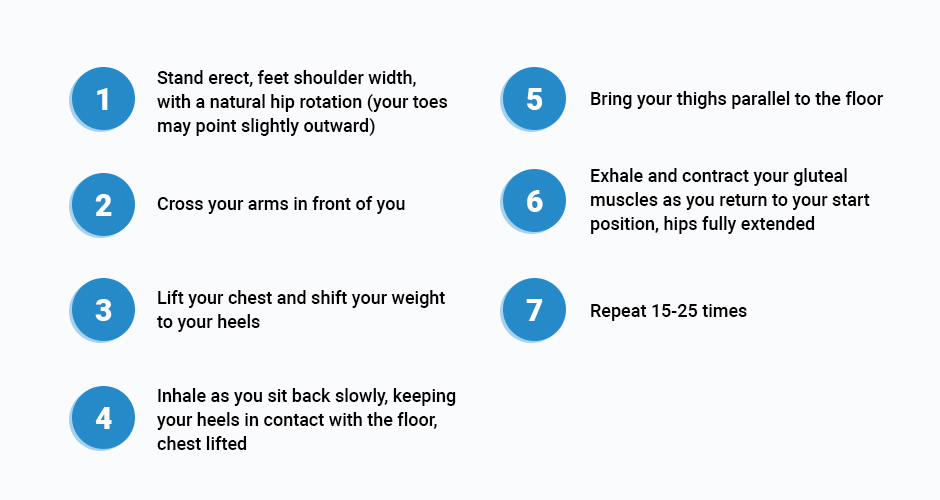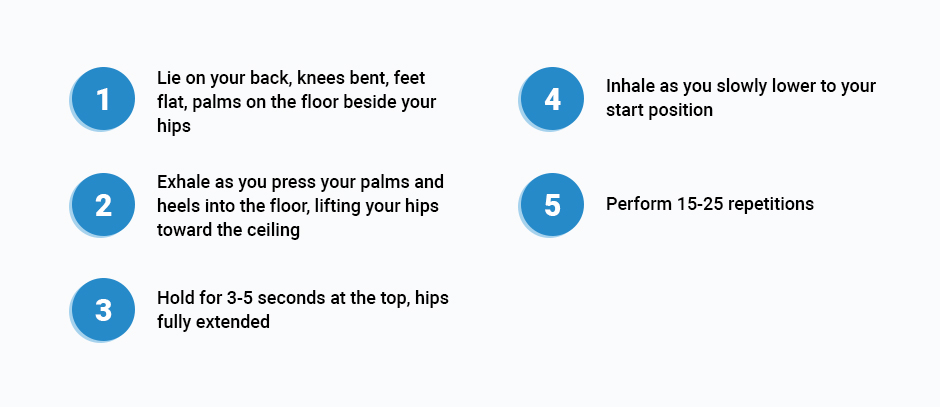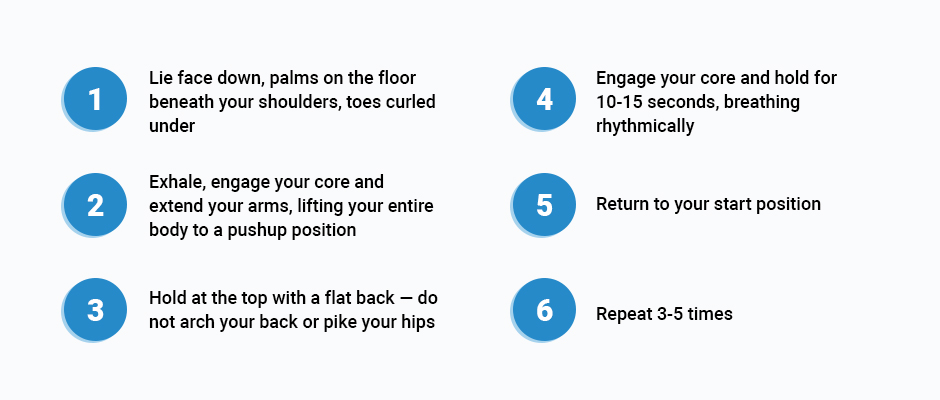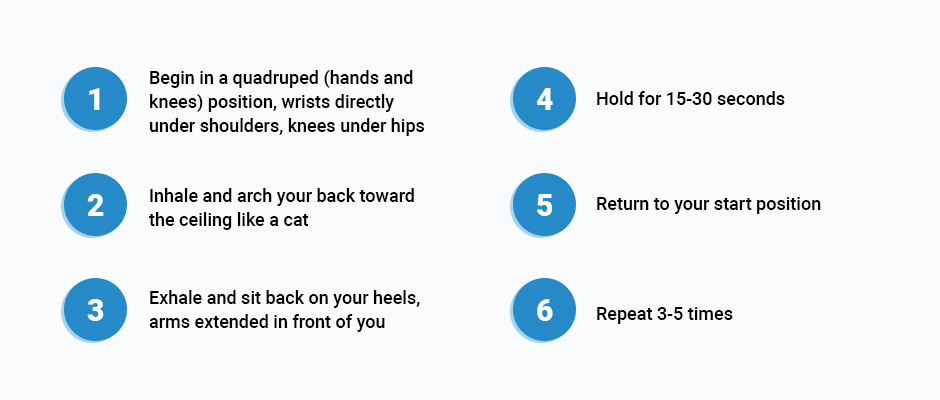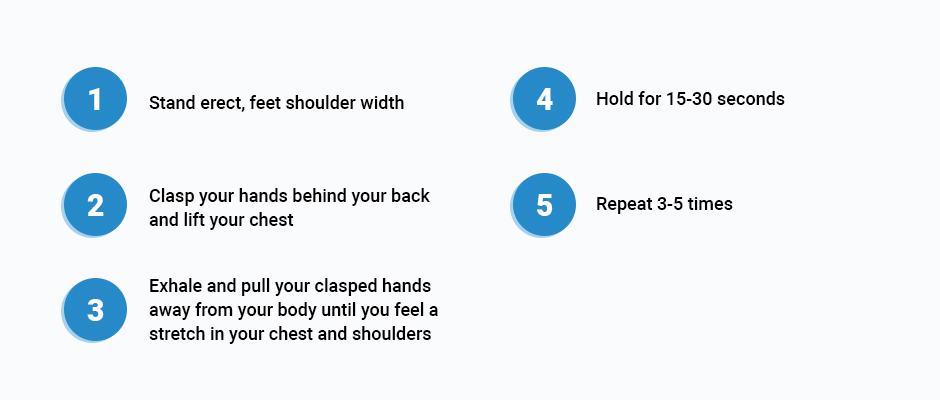Technology and the outsourcing of manual labor jobs have transformed the way most people work in the USA. Physically demanding jobs in manufacturing and agriculture have been replaced with sedentary tasks performed for long hours in a seated position. Excessive sitting has been cited as a primary cause of obesity, back and neck pain, and lifestyle-induced metabolic disorders.
Lower cross syndrome is a condition of muscle imbalances in the lumbopelvic region. Long hours spent sitting causes some muscles to become weak and lax, while others become stiff and tight. This negatively impacts your joint and spinal alignment along your entire kinetic chain, causing pain, poor posture and dysfunctional movement.
Certain exercises for lower cross syndrome can help to restore balanced muscle tension and dramatically improve posture. You can get lower cross syndrome treatment from a chiropractor or physical therapist who understands the condition.
There is a lot going on in your hip, pelvic and lower back region. Multiple muscles and connective tissues work together to hold your joints in place, while mediating the transfer of force loads between your upper and lower body during physical activity.
Key muscles of the region include:
In addition, the pelvic region houses your reproductive organs and eliminatory system whose proper function relies on good muscle tone and proper pelvic alignment. And let’s not forget the sciatic nerve, the largest nerve in your body that travels from your low back, through the pelvic region and down the length of your legs.
Good postural alignment is key to maintaining a healthy lumbopelvic region, which in turn relies on balanced muscle tension. Regular physical activity, especially walking, helps to keep the muscles and connective tissues of the pelvic region in perfect balance, so that you can enjoy pain-free fluid movement.
Lower cross syndrome is a chronic condition that worsens over time. It occurs when muscles are weakened in the lumbopelvic region and muscle tension becomes imbalanced.
Simply put, lower cross syndrome is caused from being sedentary and out of shape. The human body is designed to move, not sit. Before the invention of the chair, ancient peoples rested in a squatting position between physically demanding tasks.
Today, many of us spend all day sitting in front of a computer for work, driving in a seated position from place to place, and unwinding at the end of the day by sitting in front of a screen. Unless offset by regular physical activity, sitting can literally kill you over time.
Lower cross syndrome is marked by:
Weak and lax abdominal muscles
Overly tight hip flexors
Stretched and lax gluteal muscles
Tight hamstrings
Tight low back extensors
Anterior pelvic tilt
Exaggerated lumbar curvature (lordosis)
The postural changes brought on by lower cross syndrome can also impact:
There are a number of things you can do right away to prevent or correct lower cross syndrome and its harmful side effects.
Take frequent breaks from sitting
Begin a daily walking program
Use a standing desk, or work at a bar-height table or countertop
Get physically active. Swimming, water aerobics, dancing and other activities that engage the muscles throughout your body help to promote good alignment Resistance training builds strength to hold your joints in alignment
Practice diaphragmatic breathing
Get help from a chiropractor, physical therapist or personal trainer who understands lower cross syndrome
Try these exercises throughout the day to offset the negative effects of sitting and restore healthy posture:
Hip flexor stretch
Stand erect next to a chair or table, using your left hand for balance
Grasp the top of your right foot with your right hand and point your knee toward the ground until your hip is straight
Inhale deeply, then exhale as you gently pull upward on your foot to increase your hip extension
Hold for 15-30 seconds, breathing rhythmically
Repeat on the other side
Perform several times throughout the day
Squats
Stand erect, feet shoulder width, with a natural hip rotation (your toes may point slightly outward)
Cross your arms in front of you
Lift your chest and shift your weight to your heels
Inhale as you sit back slowly, keeping your heels in contact with the floor, chest lifted
Bring your thighs parallel to the floor
Exhale and contract your gluteal muscles as you return to your start position, hips fully extended
Repeat 15-25 times
Supine bridges
Lie on your back, knees bent, feet flat, palms on the floor beside your hips
Exhale as you press your palms and heels into the floor, lifting your hips toward the ceiling
Hold for 3-5 seconds at the top, hips fully extended
Inhale as you slowly lower to your start position
Perform 15-25 repetitions
Planks
Lie face down, palms on the floor beneath your shoulders, toes curled under
Exhale, engage your core and extend your arms, lifting your entire body to a pushup position
Hold at the top with a flat back — do not arch your back or pike your hips
Engage your core and hold for 10-15 seconds, breathing rhythmically
Return to your start position
Repeat 3-5 times
Low back stretch
Begin in a quadruped (hands and knees) position, wrists directly under shoulders, knees under hips
Inhale and arch your back toward the ceiling like a cat
Exhale and sit back on your heels, arms extended in front of you
Hold for 15-30 seconds
Return to your start position
Repeat 3-5 times
Chest and shoulder stretch
Stand erect, feet shoulder width
Clasp your hands behind your back and lift your chest
Exhale and pull your clasped hands away from your body until you feel a stretch in your chest and shoulders
Hold for 15-30 seconds
Repeat 3-5 times
NYDNRehab clinical director Dr. Lev Kalika spent two entire years in Prague under the tutelage of Dr. Vladamir Janda, a pioneer in treating musculoskeletal pain. Janda was the first to identify upper and lower cross syndrome, and he passed a wealth of knowledge on to Dr. Kalika.
If you feel out of alignment from too much sitting, physical therapy and chiropractic care can help to restore optimal posture and eliminate pain. To get the best lower cross syndrome treatment in NYC, contact NYDNRehab today, and get the help you need to get moving again!


